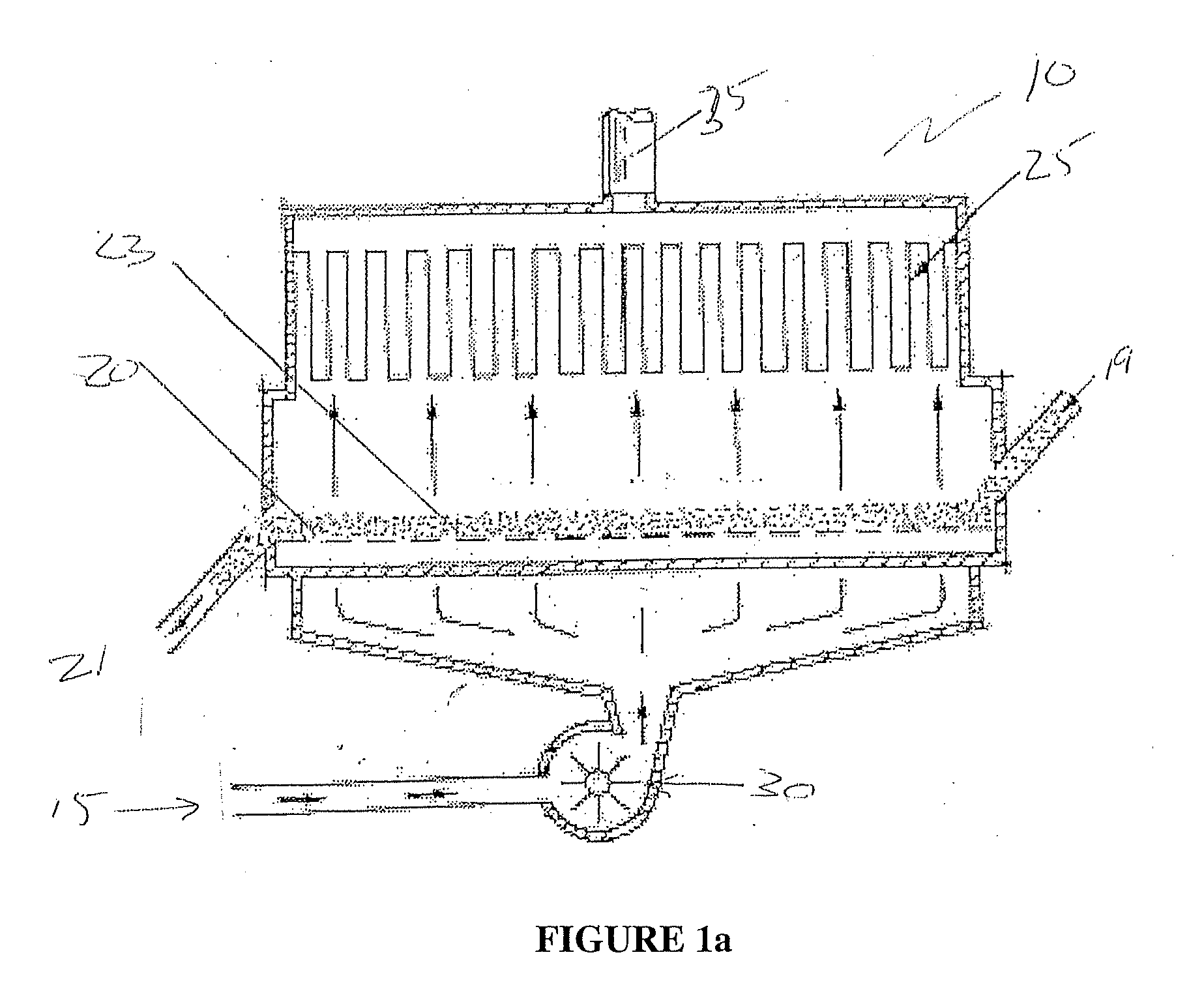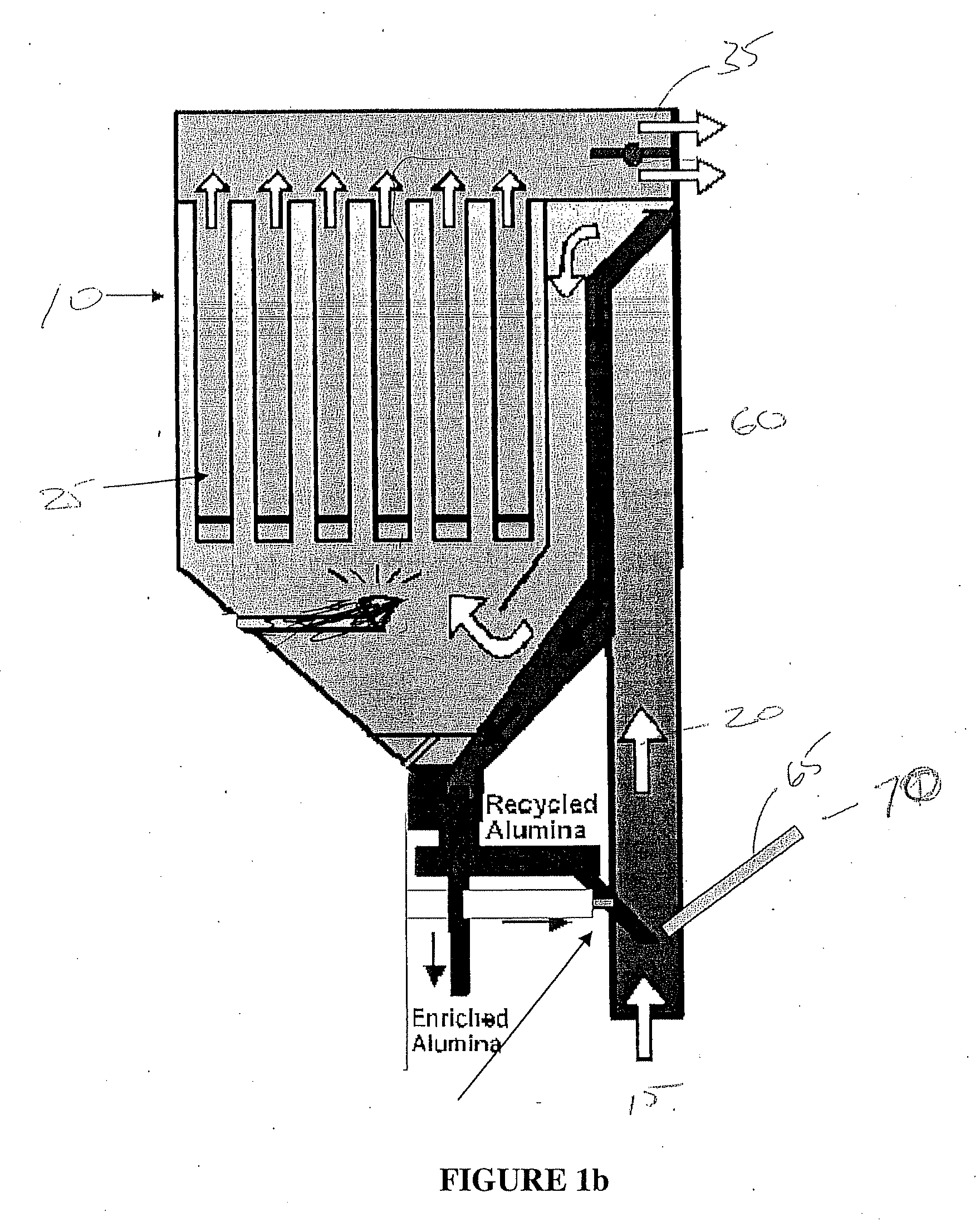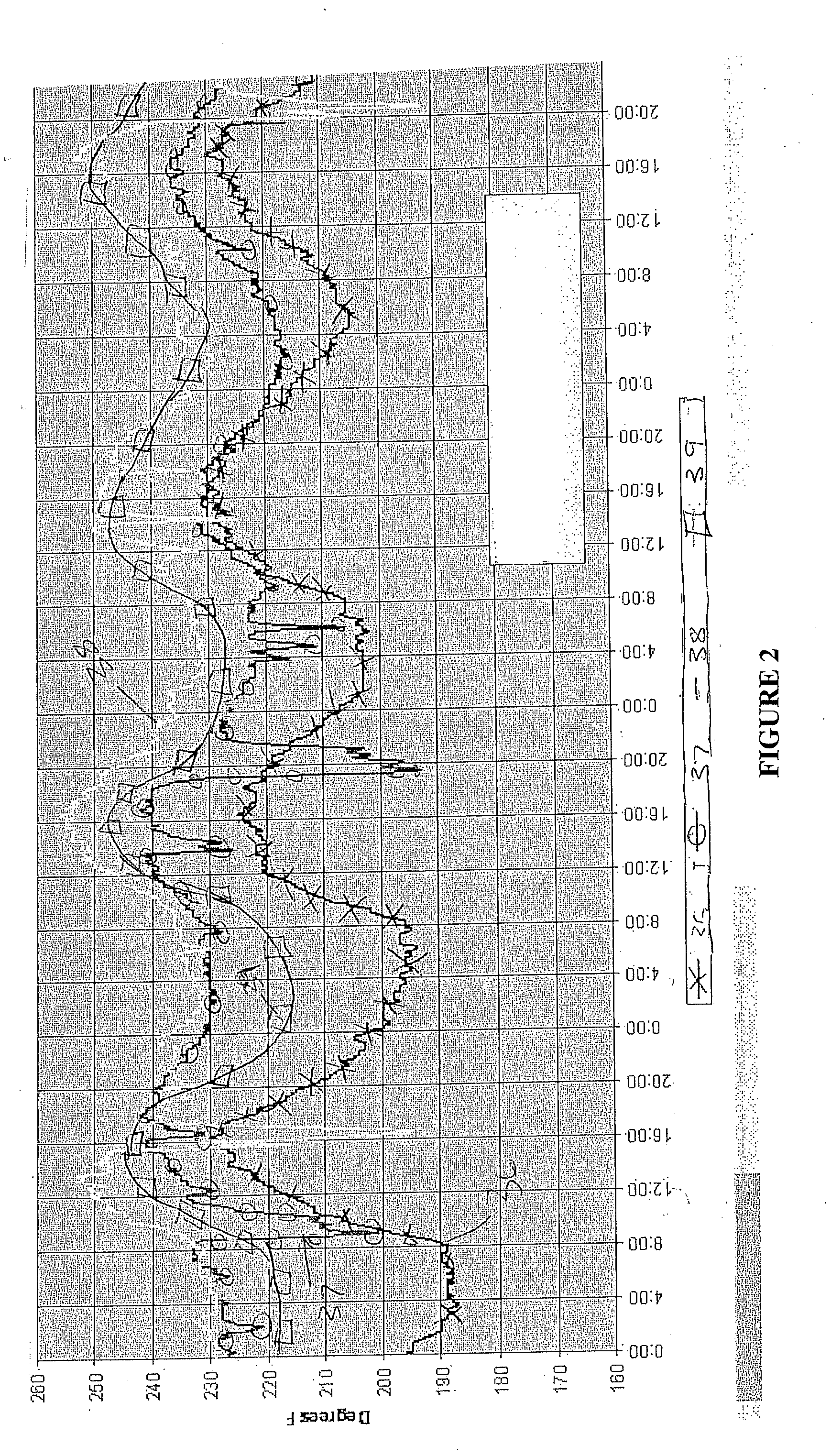Method For Improving the HF Capture Efficiency of Dry Scrubbers
- Summary
- Abstract
- Description
- Claims
- Application Information
AI Technical Summary
Benefits of technology
Problems solved by technology
Method used
Image
Examples
example
[0046]The HF concentration peaks measured in the waste gas exhaust 35 may be substantially eliminated by increasing the alumina feed rate to correspond to the portions of alumina scrubbing cycle that occur during the peak temperature hours of the day, which typically occur during daylight.
[0047]The alumina feed rate was varied from less than 10 tons per hour to approximately 15 tons per hour in a fluidized bed dry scrubber located in Mt. Holly, S.C., for a time period of approximately five days during the month of July. The alumina feed rate was varied to increase feed rate during daylight hours during a time period ranged from approximately 6-10 am to approximately 6-10 pm and decrease the feed rate following sunset for a time period ranging from 6-10 pm to 6-10 am.
[0048]Referring to FIG. 7, a plot is provided depicting the effects of varying the alumina feed rate to correspond to changes in the inlet temperature on the HF recovery dry scrubber. The alumina feed rate is depicted by...
PUM
| Property | Measurement | Unit |
|---|---|---|
| Temperature | aaaaa | aaaaa |
| Temperature | aaaaa | aaaaa |
| Fraction | aaaaa | aaaaa |
Abstract
Description
Claims
Application Information
 Login to View More
Login to View More - R&D
- Intellectual Property
- Life Sciences
- Materials
- Tech Scout
- Unparalleled Data Quality
- Higher Quality Content
- 60% Fewer Hallucinations
Browse by: Latest US Patents, China's latest patents, Technical Efficacy Thesaurus, Application Domain, Technology Topic, Popular Technical Reports.
© 2025 PatSnap. All rights reserved.Legal|Privacy policy|Modern Slavery Act Transparency Statement|Sitemap|About US| Contact US: help@patsnap.com



